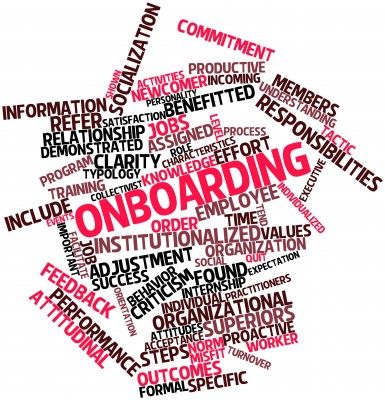On-boarding. It’s about getting a head start, managing the message and building the team. You know on-boarding can be an expensive process, but everyone agrees that to welcome a new hire to the company, it’s the right approach. But what if the new contributor is not a new hire, but rather a contractor retained for a specific skill and for a time-limited engagement? Is it worth it then? Is it essential? How can you afford to spend on-boarding time and money on someone who will be “with” the company for just a limited time?
According to Forbes.com Leadership contributor, George Bradt, on-boarding attention for contractors is not only worth the effort, but perhaps is doubly important. One-third of the U.S. labor force is comprised of freelancers and contractors, and this group is only expected to grow in the future. Contractors are often sought for their specific skills and expertise, but as they move through various sizes of organizations in short-term and longer-term assignments, they may experience challenges associated with changes in environments. The answer to helping contractors accomplish what they were assigned to do within the allotted timeframe, Bradt suggests, is two-way on-boarding.
Two-way headstart.
A two-way headstart involves not only preparing the contractor for entering the team setting, but also preparing the team to receive the contractor. It is unreasonable, argues Brandt, to expect a contractor to be able to figure out how to become part of an unwilling or wary team. It is management’s responsibility to prepare the environment.
Two-way messaging.
The benefit that the contractor brings to the team should be obvious. But what often is ignored are the benefits the contractor may receive from his or her association with the company. If the contractor is motivated solely by financial reward, then expect him or her to do just what they are paid for. But if you’re hoping the contractor will contribute not only their skill but also their passion, make sure the manager and team member are communicating the company’s mission, vision and values with the contractor. Understanding one’s task as part of something of great importance can inspire and uplift work quality. For example, is the bricklayer simply building a wall or is he building a great cathedral?
Two-way team building.
Clarification of expectations goes both ways. Align expectations so that the team knows what they can expect from the contractor and the contractor knows what they can expect from the team. Clear expectations and open communication are the basis for solid team operations.
So, whether a new hire or a contractor is entering your company’s work environment, the basics of on-boarding apply. The two-way on-boarding approach described here is perhaps even more critical when a contractor is involved because you expect maximum value in a short period of time. Or, perhaps all new workers of every kind would be more productive from the outset if two-way on-boarding were to become the norm.
To learn more about how Talencio has helped other life science companies with capacity and expertise needs, contact us directly at 612.703.4236 or email to: pnorbom@talencio.com. Talencio, LLC is the preferred provider of vetted, accomplished professionals to the Life Sciences community.
Resources:
Want the Best From Contractors? Deploy Two-Way On-boarding. George Bradt, contributor.
http://www.forbes.com/sites/georgebradt/2014/04/30/want-the-best-from-contractors-deploy-two-way-onboarding/
